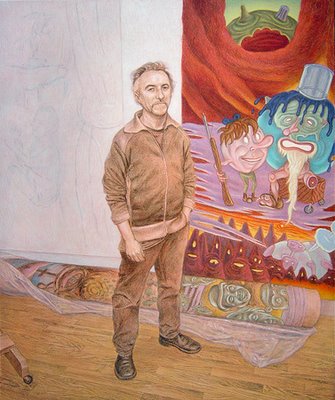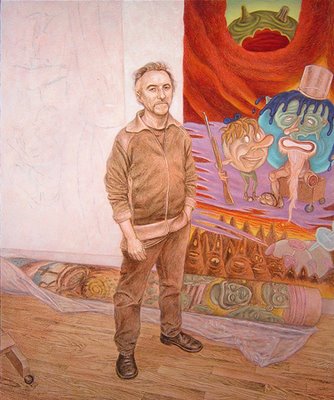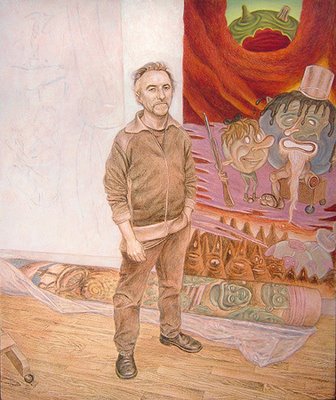 Step 13
Step 13I'm working on a few more areas now, simultaneously. I continue to strengthen David's painting on the right side of the canvas, and have started to solidify the white wall behind his head as well as the depiction of his charcoal drawing to the left. My "whites" for those areas consist, at this point, of pale green tones (green earth + titanium white) over the pinkish underlayment. I'm also using delicate grays made from terra nera Romana and zinc white to begin to suggest smeared and partially erased charcoal passages. I applied a faint glaze of light yellow ochre and zinc white over the floor.
The challenge, I think, with my depiction of both David's drawing and especially his painting (besides making them look like his work) is to make them appear at once to be flat surfaces on a wall behind the artist yet have the vitality of the originals. I'm trying to keep their color intensity and modeling slightly in check so that the "3-dimensional" figure of the artist will emerge from the space by contrast.
Though the differences are subtle and probably not even apparent in these photos, a lot of painting has transpired since the previous post. It occurred across small areas and in multiple, overlapping layers of colors.
The challenge, I think, with my depiction of both David's drawing and especially his painting (besides making them look like his work) is to make them appear at once to be flat surfaces on a wall behind the artist yet have the vitality of the originals. I'm trying to keep their color intensity and modeling slightly in check so that the "3-dimensional" figure of the artist will emerge from the space by contrast.
Though the differences are subtle and probably not even apparent in these photos, a lot of painting has transpired since the previous post. It occurred across small areas and in multiple, overlapping layers of colors.






